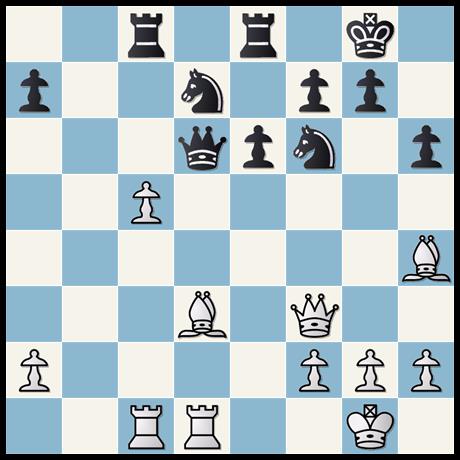Of all the perceptive comments about Magnus Carlsen-vs.-Sergey Karjakin, the most striking came from the challenger’s longtime second, Yury Dokhoian. "At the current moment in chess, defense is stronger than attack," he told Sport-Express. "This is a fact. These are the realities of the modern game."
This may sound strange considering that this was the first match in the 130-year history of the world championship to end with a truly stunning attacking move.
But Carlsen’s mating 50.Qh6+! in the final playoff game didn’t change the outcome. His position had been won for some time.
The moves that were truly pivotal in this match were quite different. They included:
.jpg)
With 51…h5! Karjakin turned his heroic defense of more than 25 moves into a furious counterattack. He won with remarkable speed, 52. h4 a2! White resigns.
That might have decided the match had it not been for his defensive slip two games later:

Perhaps Karjakin’s worst mistake in New York was overlooking the forced draw of 20…Nxf2+! (21. Kg2 Nh4+! 22. Kg1 Nh3+--not 22. gxh4? Qg6+). He went on to lose the game that tied the match.
There were other key turning points in the match and most of them concerned defensive moves. Both players impressed in this regard, not just the player whose fans called him "the Minister of Defense." Carlsen’s marathon defense in the ninth game was highly praised by Karjakin. He played "fantastically," the challenger said.
This was quite a different match than the ones we’ve come to know because defense – a modern style of defense – played such a dominant role. When we think of great world championship battles we remember dazzling attacking moves – several Kasparov moves come to mind.
To a lesser degree, we recall matches for the opening innovations that rewrote theory. Not this time: Carlsen-Karjakin may be the least theoretical match in a century. If you had predicted several weeks ago that two of the games would begin 1.e4 e5 2.Nf3 Nc6 3.Bc4 Bc5 4. 0-0?!, no one would have believed you.
No, this was a match of defense and, if Dokhoian is right, it reflects a shift in chess style. There have been eras when defenders outnumbered attackers among the game’s elite. For example, the time of Wilhelm Steinitz, Emanuel Lasker and Geza Maroczy.
And there have been times when the attack had the upper hand: Half a century ago the world’s top players included at least five who were primarily attackers (Mikhail Tal, Boris Spassky, Leonid Stein, Yefim Geller, Paul Keres) and others who were superb attackers when the position called for it (Bobby Fischer, Bent Larsen, Lev Polugayevsky). Only Tigran Petrosian could be considered primarily a defender.
Even in the most defense-oriented eras, there were standout attackers. Now look at the top ten Elos of today. Who on that list would you call a distinctly attack-oriented player?
A few reasons for this shift come to mind:
First, computers have taught us that positions once considered hopeless are not. They don’t require "computer moves" to be saved, just bend-don’t-break resistance. Another reason that defense is being emphasized, is that time controls and lack of adjournments have made chess much more physical. It simply takes more energy, mental and otherwise, to try to be the irresistible force than to be the immoveable object.
Also, we now appreciate that successful resistance has a profound psychological impact. Losing a game badly is depressing. But failing to win a won game is just as bad, as Carlsen showed.
Garry Kasparov said the fourth game of the recent match came "as a shock" to the champion. He had a winning position for "25 or 30 moves" but Karjakin managed to defend, Kasparov said. Carlsen admitted he became discouraged mid-match, when he felt he should have been plus-one or plus–two because of his positions up to then.
And another reason for the trend towards defense is that players are consciously seeking a more creative approach to it. Dokhoian said Karjakin won the last World Cup and Candidates Tournament because of what he called artistic defense.
This is reflected in a deeper study of techniques such as building a fortress in an endgame. Think of Karjakin’s drawing with 78…h5!! in the second rapid playoff game and his Houdini act in the fourth round. But we also saw how fortresses influenced the outcome of the 2012 Anand- Gelfand world championship.

After 20…Rxc5! Black lost his queen, 21. Bh7+ Kxh7 22. Rxd6. But his position was solid after 22…Rxc1+ 23. Rd1 Rec8. White conceded the draw 26 moves later.
The pendulum seems to be clearly swinging towards defense. When will it swing back?


















.jpg)







